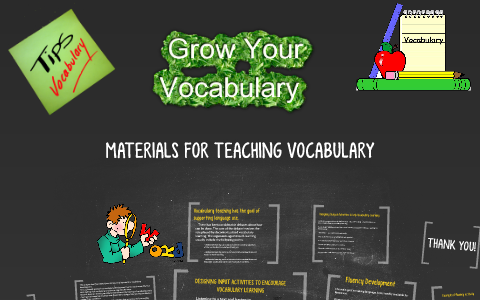Good Reasons On Picking Italian Kindergarten Teaching Support
Wiki Article
What Are The Educational And Informational Content That Primary And Secondary Schools Require?
The materials are required in primary and kindergartens to assist students in learning and develop. Examples of materials you may need include Curriculum Materials- These materials will support the learning goals of your school's curriculum. These may include textbooks, workbooks, lesson plans, and other resources.
Classroom supplies: Classroom materials such as pencils, paper and scissors, glue, as well as other art materials are essential for young children to complete their tasks and projects.
Educational technology: In this digital age, educational technology such as tablets, computers and interactive whiteboards are able to enhance learning and provide additional tools for students.
Booksfor Kindergarten and Primary schools need a wide range of age-appropriate books to encourage reading and language development.
Manipulatives: Puzzles, blocks and many other games may help develop children's spatial awareness, problem-solving, and problem-solving capabilities.
Visual aids- Visual aids such as charts, posters and maps can assist youngsters to understand and retain important concepts.
Arts and Music Materials - Instruments, art supplies, such as clay, paints or other materials, provide children with creative avenues and help them express themselves.
Safety materials- Safety materials such as first aid kits, fire extinguishers and emergency procedures posters are crucial to protect the safety and well-being of staff and students.
All in all, kindergarten and primary schools need a variety of educational and informational resources to create an engaging and secure learning environment for their pupils. See the most popular sostegno scuola primaria for website tips.
What Math-Related Teaching Materials And Tools Are Recommended In Italian Nurseries
Mathematics-related teaching materials and educational tools can assist Italian preschoolers develop their numerical and spatial skills, as well as problem-solving. Here are a few examples of materials that could be used: Counting Manipulatives counting bears, beads, and blocks help children improve their counting skills, fine motor skills, and hand-eye co-ordination.
Number cards and charts They can be used as a way to introduce children to counting and numbers. They can be colorful and large numbers that are hung in the room, or the smaller ones that children can manipulate.
Shape manipulatives. Children can learn about various shapes using shape manipulatives. They include wooden puzzles, pattern blocks, as well as magnetic tiles.
Measuring instruments: Measuring tools such as rulers or tapes for measuring as well as scales will aid your child in understanding the concept of comparisons, as well as expanding the mathematical vocabulary of your child.
Simple puzzles and games: Simple games and puzzles such as dominoes, matching games, and jigsaw puzzles can help children develop their problem-solving skills as well as their concentration and attention to detail.
Technology-based aids: Tablets and other technology-based aids like tablets with math-related apps and games are able to entertain youngsters and offer additional resources for learning.
Use of these materials must be appropriate for children's development, safe, and appropriate for children. Teachers and caregivers can use these materials to create engaging and interactive math activities which encourage children's curiosity and passion for learning. Follow the best materiale didattico matematica sostegno for website info.

What Historical Teaching Materials Are Needed In Italian Preschool Schools?
Italian nurseries employ history-based materials to help students learn about the past. They also teach them how to understand the current state of affairs and provide the children a strong sense belonging. Some examples of the historical teaching materials that may be required include age-appropriate books: The books that are focused on the historical past, individuals and cultures may help youngsters develop an interest and sense of connection with the past.
Pictures and artifacts Photos and artifacts from various cultures and times can assist children to understand and comprehend historical events.
Maps, timelines, and other visual aids are helpful in helping children understand how events have interconnected.
Storytelling is a great way to introduce children historic events and people. It's engaging and memorable.
Dramatic Play: Dramatic games can help children recreate historic events and experiences, and gain a better understanding of the past.
Field excursions. Field trip options include visiting local historical sites, museums and other sites that offer hands-on learning and experience.
It is vital that the materials that are used in teaching history are age-appropriate as well as sensitive to cultural differences. Teachers and caregivers can use these resources to design stimulating and interactive activities in the field of history that encourage children's curiosity as well as enthusiasm for learning. Check out the most popular schede didattiche storia for site advice.

What Kind Of Geography Materials Can Be Used In Italian Kindergartens?
Teaching materials for geography in Italian nurseries can aid children gain a better understanding of the world around them, and also learn about different cultures and environments. A few examples of the resources that you can use to teach geography include: Maps. Maps are useful for helping children learn about the different countries and regions, and the locations of landmarks and natural characteristics.
Globes Help children see the Earth's surface and learn about the various continents and oceans.
Pictures and videos Images and videos from diverse places and cultures will help children discover the variety of the world and build a love for different ways of life.
Books: Age-appropriate books with a variety of countries and cultures can encourage children to get interested in geography as well as a sense of wonder about the world.
Natural substances. Shells, rocks, and plants aid children in understanding the different ecosystems and environments.
Field trips. Children can learn about geography through hands-on experiences and encounters at local parks, zoos and museums.
It is crucial to select geography-related teaching materials that are age-appropriate as well as culturally sensitive. These materials let teachers and caregivers create engaging and engaging activities that encourage the love of learning among children and curiosity.

